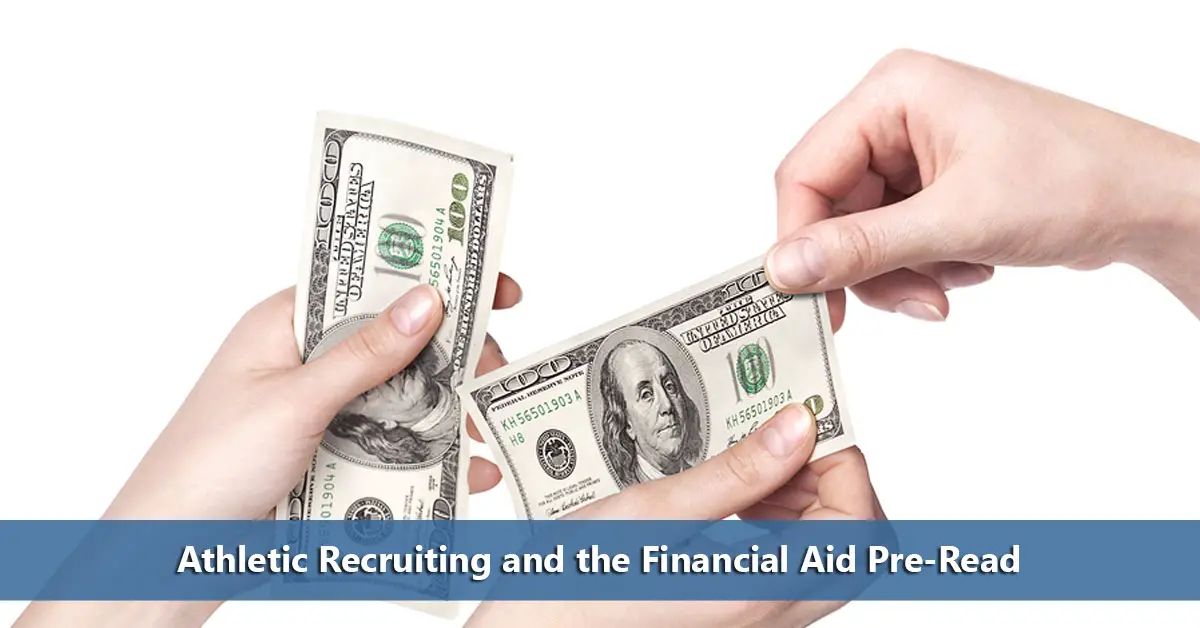 Athletes need to know about financial aid pre-reads since one third of colleges do not offer athletic scholarships. At institutions that do offer scholarships, most sports are equivalency sports meaning that athletes are likely to receive only partial scholarships, if any at all. This means that the availability of non-athletic financial aid is an important consideration for most college athletes.
Athletes need to know about financial aid pre-reads since one third of colleges do not offer athletic scholarships. At institutions that do offer scholarships, most sports are equivalency sports meaning that athletes are likely to receive only partial scholarships, if any at all. This means that the availability of non-athletic financial aid is an important consideration for most college athletes.
| Free Email Course on How to Start Profiling a College |
Generally, students complete the FAFSA or the CSS PROFILE to determine their financial aid award. However, since financial aid award letters usually aren’t sent out until the spring of the athlete’s senior year, the process takes place too late for athletes who have to commit long before they’re even allowed to submit the financial aid application. Therefore, the financial aid pre-read is critical for athletes that won’t be receiving athletic scholarships.
When do you get the pre-read?
A financial aid pre-read will generally happen later in the recruiting process once the coach is convinced that the player meets the school’s academic requirements and has the athletic abilities to contribute to the team. So when a coach asks a player for grades and test score information to share with the admissions office, he should offer a financial aid pre-read as well. If one isn’t offered, this is the time to ask for one.
Keep in mind that the financial aid pre-read process will vary from school to school. Some coaches are limited in the number of pre-reads they can request. Others just may not want to spend a lot of effort on low prospect players. In either case, they are likely only to offer a pre-read to athletes they believe are very likely to attend the school.
Families need to be prepared to provide prior year income tax returns, taxes paid, w-2 forms, and bank statements for a pre-read. Depending on circumstances, non-custodial parents may have to submit documentation as well. Generally, families can expect the results from a financial pre-read in approximately two weeks. Make sure you have used an Expected Family Contribution (EFC) calculator so that you will have some idea of whether or not the financial aid package is meeting your need.
The financial aid pre-read is still an estimate
The financial aid pre-read is only an estimate. The student will still have to apply for financial aid by completing the FAFSA and any other requirements the college may have. Yet, the estimate should be accurate enough to rely upon if there are no major changes in the family’s financial circumstances.
The athletic departments of larger schools and D1 programs will probably be responsible for managing an athlete’s financial aid pre-read with the financial aid office (University of Pennsylvania Example). However, smaller schools and D3 programs may not have an established process for pre-reads and the student will have to request the pre-read directly from the financial aid office. The coach should be able to direct the athlete to an appropriate contact for a pre-read.
Always use the Net Price Calculator
All colleges are required to have a net price calculator available on their websites. Depending on the quality of the calculator, these can provide the equivalent of a pre-read. However, many net price calculators provide less than accurate estimates. Therefore, if an athlete is asked to apply early decision as part of the recruiting process, families shouldn’t hesitate to ask for a pre-read from the financial aid office.
Don’t ignore the non-athletic aspects of financial aid, read Why Your EFC Should be how you Start Your College Search if you haven’t already.



5 thoughts on “Why Athletic Prospects need the Financial Aid Pre-Read”